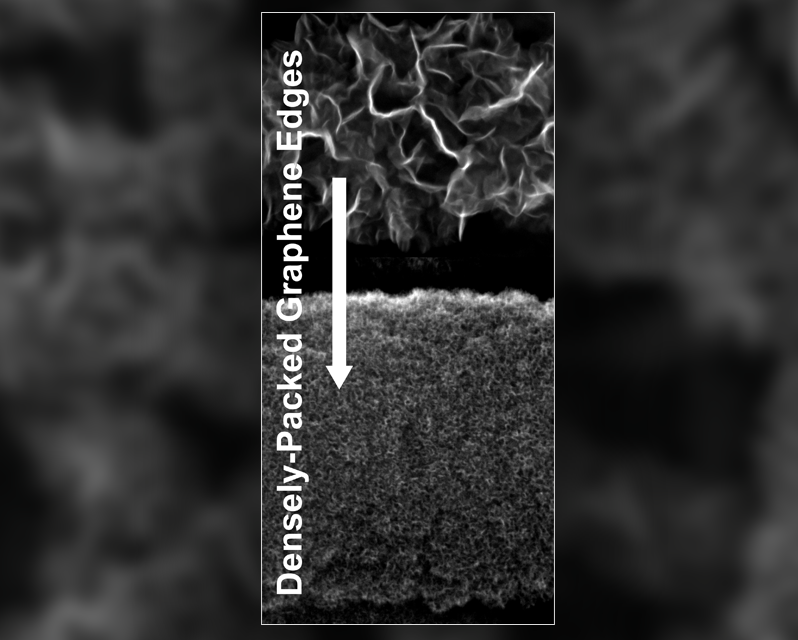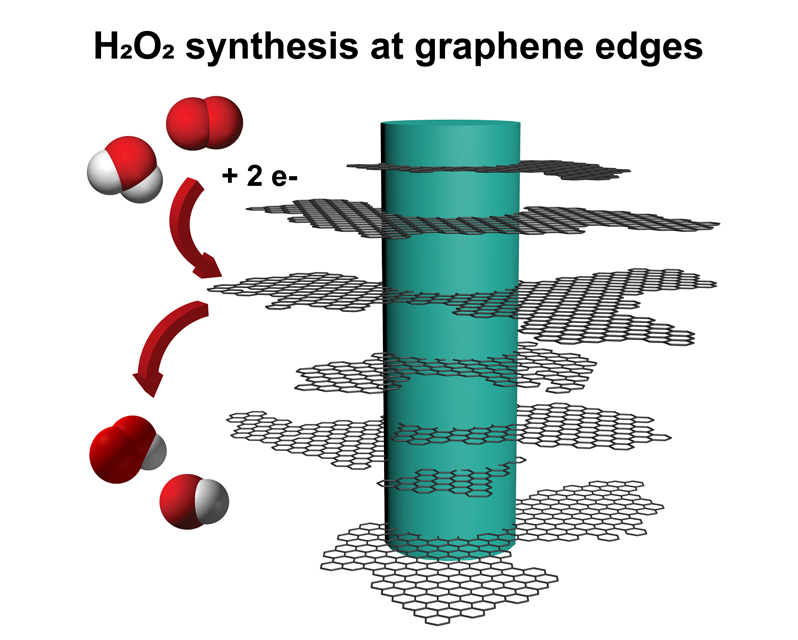Producing hydrogen peroxide when, and where, it’s needed
Does a material exist that can be used to selectively, reliably, and efficiently form hydrogen peroxide whenever and wherever it’s needed?
The big brown bottle of hydrogen peroxide (H2O2) is a staple of the modern medicine cabinet, always on hand for first aid needs. Lesser known uses of hydrogen peroxide include disinfecting hospital equipment and fueling spacecraft. Yet as common and beneficial of a substance as it is, hydrogen peroxide is surprisingly hard to produce and transport.
Currently, hydrogen peroxide is made through what’s known as the “anthraquinone process.” This method is energy-intense, requires large-scale production, and produces large quantities of carbon dioxide (CO2) as a byproduct. While directly reacting hydrogen and oxygen to make hydrogen peroxide would be ideal, thermodynamics prefers to form the more stable water (H2O) over hydrogen peroxide.
So the challenge becomes: does a material exist that can be used to selectively, reliably, and efficiently form hydrogen peroxide whenever and wherever it’s needed, so that transporting it isn’t necessary?
A team of researchers from Carnegie Mellon University has set out to meet that difficult challenge. Associate Professors Venkat Viswanathan (mechanical engineering) and Tzahi Cohen-Karni (biomedical engineering/materials science and engineering) are leading an effort to develop a cheap, renewable, and sustainable method of creating hydrogen peroxide. The team has published a paper in ACS Catalysis on the work.
With our method we hope to provide the capability of making hydrogen peroxide when you need it, wherever you are.
Venkat Viswanathan, Associate Professor, Mechanical Engineering
“The most difficult thing about hydrogen peroxide is transporting it,” explains Viswanathan. “Hospitals and space missions have particular uses for hydrogen peroxide, including rapid sterilization and as an oxidant. Transport of hydrogen peroxide to hospitals can be dangerous and complicated, and you can’t take gallons of oxidants into space due to weight restrictions, so with our method we hope to provide the capability of making hydrogen peroxide when you need it, wherever you are.”
For several years, Cohen-Karni and his lab have been developing a technique of growing graphene in a 3D topology, leveraging defects in the material to grow what he calls “fuzzy graphene.” Graphene, which is a form of carbon, is also highly abundant, cheap, and renewable. Cohen-Karni’s method allows graphene to grow away from a surface, rather than along it, creating long, thin, flaky graphene structures that look somewhat like nanoscale pine trees.
Graphene has an impressive ability to transport electric charge. Building on Cohen-Karni’s fuzzy graphene research, the team found that graphene-based materials with lots of edges, like the ones found at the tips of each fuzzy graphene flake, are highly reactive for synthesizing hydrogen peroxide. So fuzzy graphene, an electrically conductive material with many edges, is the perfect candidate for this new and improved method of hydrogen peroxide generation.
Viswanathan’s research over the last several years has explored the exact properties needed of a catalyst to selectively create hydrogen peroxide from hydrogen and oxygen. Using the Titan, one of the world’s best transmission electron microscopes, the researchers showed that catalytic reactions happen right at the edge of each flake, not on the flat surfaces. The team demonstrated that they can control the kind of catalysis that occurs on fuzzy graphene, selectively creating either hydrogen peroxide or water as they choose by activating the sites at the tips of each flake.
“We can now really controllably make hydrogen peroxide with high selectivity,” says Cohen-Karni. “We are now able to make mostly hydrogen peroxide, and not that much water. Thermodynamics really wants hydrogen and oxygen to form water when catalyzed, so being able to catalyze so selectively, with 94% of the outcome being hydrogen peroxide, means our process is highly novel.”
Other researchers on the paper include MSE Ph.D. students Daniel San Roman (first author) and Raghav Garg; MechE Ph.D. student Dilip Krishnamurthy (co-first author); Director of CMU’s Electron Microscopy & Materials Characterization Facility Noel Nuhfer; Los Alamos National Laboratory’s Hasnain Hafiz; and Rensselaer Polytechnic Institute’s Michael Lamparski and Vincent Meunier.


